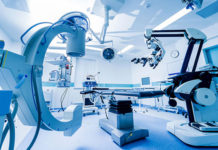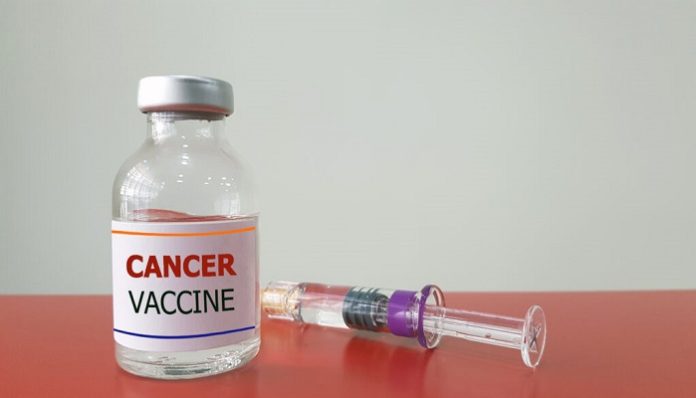Researchers at Northwestern University’s International Institute for Nanotechnology (IIN) have devised a novel method for dramatically increasing the potency of practically any vaccine. The researchers used chemistry and nanotechnology to alter the structural placement of adjuvants and antigens on and within a nanoscale vaccination, resulting in significantly improved vaccine performance. The antigen stimulates the immune system, and the adjuvant improves the antigen’s effectiveness.
The researchers used chemistry and nanotechnology to alter the structural placement of adjuvants plus antigens on and within a nanoscale vaccination, resulting in significantly improved vaccine performance. The antigen stimulates the immune system, and the adjuvant also improves the antigen’s effectiveness.
The findings appeared in the journal Nature Biomedical Engineering.
Lead researcher Chad A. Mirkin, director of the IIN, said the research demonstrates that vaccine structure, not merely its components, is the crucial element in determining a vaccine’s effectiveness. The location and orientation of the antigen and adjuvant inside a single design significantly alter how the immune system perceives and processes it.
As well as teaching chemistry at Northwestern University’s Weinberg College of Arts and Sciences and teaching medicine at the Feinberg School of Medicine, Mirkin holds the George B. Rathmann Chair in Chemistry.
According to Mirkin, conventional cancer vaccinations, which historically have not been very effective, may become more effective as a result of this new, increased emphasis on structure.
Mirkin’s team has investigated the effect of vaccination construction in the setting of seven different cancer types in order to determine the optimum design for treating each disease, including triple-negative breast cancer, melanoma, colon cancer, papillomavirus-induced cervical cancer, and prostate cancer.
A blender approach by conventional vaccines
The antigen and maybe the adjuvant are combined in the majority of conventional vaccinations before being injected into a patient. There is minimal control over the vaccine’s composition, which has an impact on how the components are handled during processing and transportation. As a result, the vaccine’s efficacy is unpredictable.
According to former Northwestern postdoctoral associate Michelle Teplensky and study author, who is currently an assistant professor at Boston University, a problem with conventional vaccines is that an immune cell may pick up 50 antigens and one adjuvant or antigen and 50 adjuvants from that blended mish-mash. But for the vaccination to be as successful as possible, there must be a perfect balance between each.
Here’s where SNAs (spherical nucleic acids) come in. Mirkin created and developed this structural platform, which is used in this new class of modular vaccines. Scientists can precisely determine how many antigens as well as adjuvants are being transported to cells thanks to SNAs.
The presentation and processing rates of these vaccine components can also be customised by scientists using SNAs. Conventional approaches largely disregard structural concerns, which have a significant impact on vaccine effectiveness.
Rational Vaccinology
The term “rational vaccinology” was created by Mirkin to describe this approach to carefully selecting antigen and adjuvant sites inside modular immunisation systems. It is predicated on the idea that the structural presentation of vaccination components is just as significant in driving efficacy as the components themselves.
Vaccines designed through rational vaccinology deliver the appropriate quantity of antigen and adjuvant to each immune cell, so they are all equally primed to target cancer cells, according to Mirkin, who is also a member of the Lurie Comprehensive Cancer Center at Northwestern University’s Robert H. Lurie. Their vaccine equips all of their immune cells with a potent weapon to fight cancer, but a conventional vaccine leaves some of them disarmed. Which immune cell soldiers does one desire to combat the cancerous cells? rhetorically, Mirkin questioned.
Better Vaccine Built-Up
The scientists created a cancer vaccination that doubled the number of cancer antigen-specific T cells and enhanced their activation by 30% by redesigning the vaccine’s architecture to include numerous targets to assist the immune system in finding tumour cells.
The researchers looked into how efficiently two antigens were identified by the immune system depending on where they were placed on the SNA structure—the core or the exterior. They could boost T cells attacking cancer cells by increasing the immune response and how rapidly the nano vaccine-activated cytokine production for an SNA with the optimal location. The researchers also investigated how alternative placements influenced the immune system’s ability to remember the intruder, as well as whether the memory was long-lasting.
Mirkin explained that where and how antigens and adjuvants are placed inside a single design has a significant impact on how the immune system recognises and processes them. According to the study results, binding two separate antigens to an SNA with an adjuvant shell was the most effective way to construct a cancer vaccine. In comparison to a structure in which the identical two antigens were connected to two different SNAs, it increased antigen-specific T-cell activation by 30% and the quantity of proliferating T cells by a factor of 2.
In many animal models, these modified SNA nanostructures slowed tumour growth.
Mirkin described it as amazing. The therapeutic benefit against cancers is drastically changed by the positioning of antigens in two vaccinations that are virtually identical in composition.
One vaccine is effective and useful, while the other is ineffective.
Many existing cancer vaccines are primarily designed to activate cytotoxic T cells, which are only one type of defence against a cancer cell. Because tumour cells are constantly changing, they can easily evade immune cell surveillance, rendering the vaccine useless soon. If the T cell has many antigens to recognise a mutated cancer cell, its chances of recognising it increase.
Teplensky explained that activating more than one type of T cell allows you to target a tumour cell. The more cell types the immune system has to attack cancers, the better. To induce improved and long-lasting tumour remission, vaccines containing several antigens targeting various immune cell types are required.
Another benefit of the rational vaccination method is that it is simple to change the shape of a vaccine to target a different disease, especially when using a nanostructure like an SNA. Mirkin explained that they simply replace a peptide, a portion of a cancer protein that clips onto the structure much like attaching a new jewel to a bracelet.
Path Leading To The Most Effective Vaccine For Any Cancer Kind
According to Teplensky, the cumulative significance of this work is that it provides the groundwork for generating the most effective types of vaccines for practically any type of cancer. It is about rethinking how one develops vaccines in general, particularly those for infectious diseases.
Mirkin, Teplensky, and colleagues earlier proved the importance of vaccine structure for COVID-19 by developing vaccinations that produced protective immunity in 100% of mice against a deadly viral infection.
Small adjustments in antigen positioning on a vaccination boost cell-to-cell communication, cross-talk, and cell synergy, according to Mirkin. The advances obtained in this work pave the way for reconsidering the creation of vaccinations for cancer and other diseases in general.
The IIN represents and unites over $1 billion in nanotechnology research, educational initiatives, and supporting infrastructure. It was founded in 2000 as an umbrella organization to consolidate and encourage nanotechnology efforts.






















